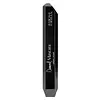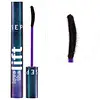Physician's Formula Mineral Wear Diamond Mascara Versus Sephora Collection Love The Lift Curling + Volumizing Mascara
What's inside
What's inside
 Key Ingredients
Key Ingredients

 Benefits
Benefits

 Concerns
Concerns

 Ingredients Side-by-side
Ingredients Side-by-side

Water
Skin ConditioningParaffin
PerfumingButylene Glycol
HumectantPalmitic Acid
EmollientPolyacrylate-21
Copernicia Cerifera Wax
Stearic Acid
CleansingSteareth-20
CleansingTriethanolamine
BufferingCetearyl Alcohol
EmollientOryza Sativa Bran Wax
Skin ConditioningTribehenin
EmollientSilica
AbrasiveSteareth-2
EmulsifyingAcacia Senegal Gum
MaskingPhenoxyethanol
PreservativeBis-Diglyceryl Polyacyladipate-2
EmollientPolybutene
Hydroxyethylcellulose
Emulsion StabilisingTrideceth-6 Phosphate
EmulsifyingCaprylyl Glycol
EmollientEthylhexylglycerin
Skin ConditioningGlycerin
HumectantMyristic Acid
CleansingAllantoin
Skin ConditioningDipropylene Glycol
HumectantLauric Acid
CleansingGlyceryl Caprylate
EmollientTocopheryl Acetate
AntioxidantPolymethylsilsesquioxane
1,2-Hexanediol
Skin ConditioningMyristoyl Pentapeptide-17
Skin ConditioningBenzoic Acid
MaskingSodium Benzoate
MaskingDiamond Powder
AbrasiveCI 77499
Cosmetic ColorantWater, Paraffin, Butylene Glycol, Palmitic Acid, Polyacrylate-21, Copernicia Cerifera Wax, Stearic Acid, Steareth-20, Triethanolamine, Cetearyl Alcohol, Oryza Sativa Bran Wax, Tribehenin, Silica, Steareth-2, Acacia Senegal Gum, Phenoxyethanol, Bis-Diglyceryl Polyacyladipate-2, Polybutene, Hydroxyethylcellulose, Trideceth-6 Phosphate, Caprylyl Glycol, Ethylhexylglycerin, Glycerin, Myristic Acid, Allantoin, Dipropylene Glycol, Lauric Acid, Glyceryl Caprylate, Tocopheryl Acetate, Polymethylsilsesquioxane, 1,2-Hexanediol, Myristoyl Pentapeptide-17, Benzoic Acid, Sodium Benzoate, Diamond Powder, CI 77499
Water
Skin ConditioningCI 77499
Cosmetic ColorantButylene Glycol
HumectantGlyceryl Stearate
EmollientSynthetic Beeswax
Emulsion StabilisingAcacia Senegal Gum
MaskingOryza Sativa Bran Wax
Skin ConditioningPalmitic Acid
EmollientStearic Acid
CleansingPolybutene
Vp/Eicosene Copolymer
Rhus Verniciflua Peel Cera
EmollientHelianthus Annuus Seed Wax
Skin ConditioningHydrogenated Castor Oil
EmollientAminomethyl Propanol
BufferingPolyimide-1
Hydroxyacetophenone
AntioxidantEthylhexylglycerin
Skin ConditioningRhus Succedanea Fruit Cera
EmollientCeratonia Siliqua Gum
EmollientXanthan Gum
EmulsifyingGlucose
HumectantTocopherol
AntioxidantWater, CI 77499, Butylene Glycol, Glyceryl Stearate, Synthetic Beeswax, Acacia Senegal Gum, Oryza Sativa Bran Wax, Palmitic Acid, Stearic Acid, Polybutene, Vp/Eicosene Copolymer, Rhus Verniciflua Peel Cera, Helianthus Annuus Seed Wax, Hydrogenated Castor Oil, Aminomethyl Propanol, Polyimide-1, Hydroxyacetophenone, Ethylhexylglycerin, Rhus Succedanea Fruit Cera, Ceratonia Siliqua Gum, Xanthan Gum, Glucose, Tocopherol
Ingredients Explained
These ingredients are found in both products.
Ingredients higher up in an ingredient list are typically present in a larger amount.
Acacia Senegal Gum has skin soothing, thickening, and formulation stabilizing properties. It comes from the Acacia tree that is native to sub-Saharan Africa.
Butylene Glycol (or BG) is used within cosmetic products for a few different reasons:
Overall, Butylene Glycol is a safe and well-rounded ingredient that works well with other ingredients.
Though this ingredient works well with most skin types, some people with sensitive skin may experience a reaction such as allergic rashes, closed comedones, or itchiness.
Learn more about Butylene GlycolCi 77499 is also hydrated iron III oxide. It is created from mixing red and black iron oxides. This helps give shades of darkness to a product.
Iron III oxides are classified as inorganic chemicals for coloring.
Ethylhexylglycerin (we can't pronounce this either) is commonly used as a preservative and skin softener. It is derived from glyceryl.
You might see Ethylhexylglycerin often paired with other preservatives such as phenoxyethanol. Ethylhexylglycerin has been found to increase the effectiveness of these other preservatives.
Oryza Sativa Bran Wax is wax from the outer layer of a rice kernel. It has moisturizing properties due to its polysaccharides and omega-3 fatty acids content.
This ingredient is a byproduct of milling rice, or the operation to produce a whole grain rice product.
Palmitic Acid is a fatty acid naturally found in our skin and in many plant and animal sources. In cosmetics, it is usually derived from palm oil. It serves many purposes in skincare, acting as a cleanser, emollient, and emulsifier.
As an emollient, palmitic acid helps soften and smooth the skin by preventing water loss. In cleansers, it helps remove oil and dirt while creating foam.
Its emulsifying properties help stabilize products by keeping water and oil-based ingredients from separating.
This may not be suitable for fungal acne-prone skin, as fatty acids like this can sometimes trigger breakouts in sensitive individuals.
Learn more about Palmitic AcidPolybutene is used to help control the viscosity of a product. This just means it helps adjusts the texture.
It is a polymer and does not get absorbed into the skin due to its large size.
Studies found this ingredient did not irritate skin in concentrations below 15%.
Learn more about PolybuteneStearic Acid is a fatty acid. It is an emollient, emulsifier, and texture enhancer.
As an emollient, stearic acid helps soften skin. It aids the skin's protective barrier by preventing water loss. It also provides a gentle cleansing effect without stripping away natural oils.
Stearic acid may also be used to enhance the texture of products. It can add volume and stabilize ingredients such as water and oil. This can help water and oil ingredients from separating.
Sources of stearic acid include animal or vegetable fats/oils such as coconut or shea. It can be naturally found in butter, cocoa butter, shea butter, vegetable fats, and animal tallow.
This ingredient may not be Malassezia folliculitis, or fungal-acne safe.
Learn more about Stearic AcidWater. It's the most common cosmetic ingredient of all. You'll usually see it at the top of ingredient lists, meaning that it makes up the largest part of the product.
So why is it so popular? Water most often acts as a solvent - this means that it helps dissolve other ingredients into the formulation.
You'll also recognize water as that liquid we all need to stay alive. If you see this, drink a glass of water. Stay hydrated!
Learn more about Water